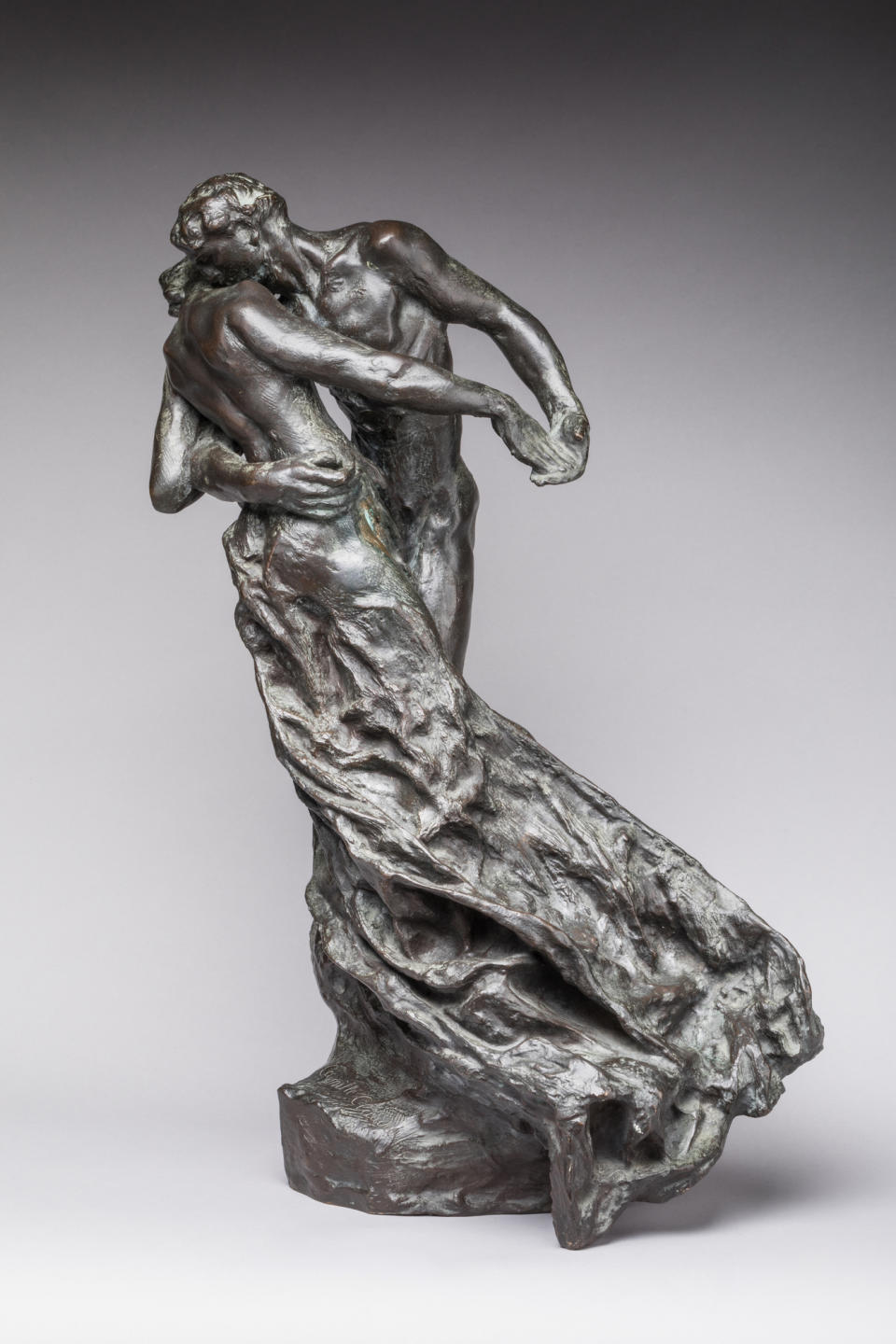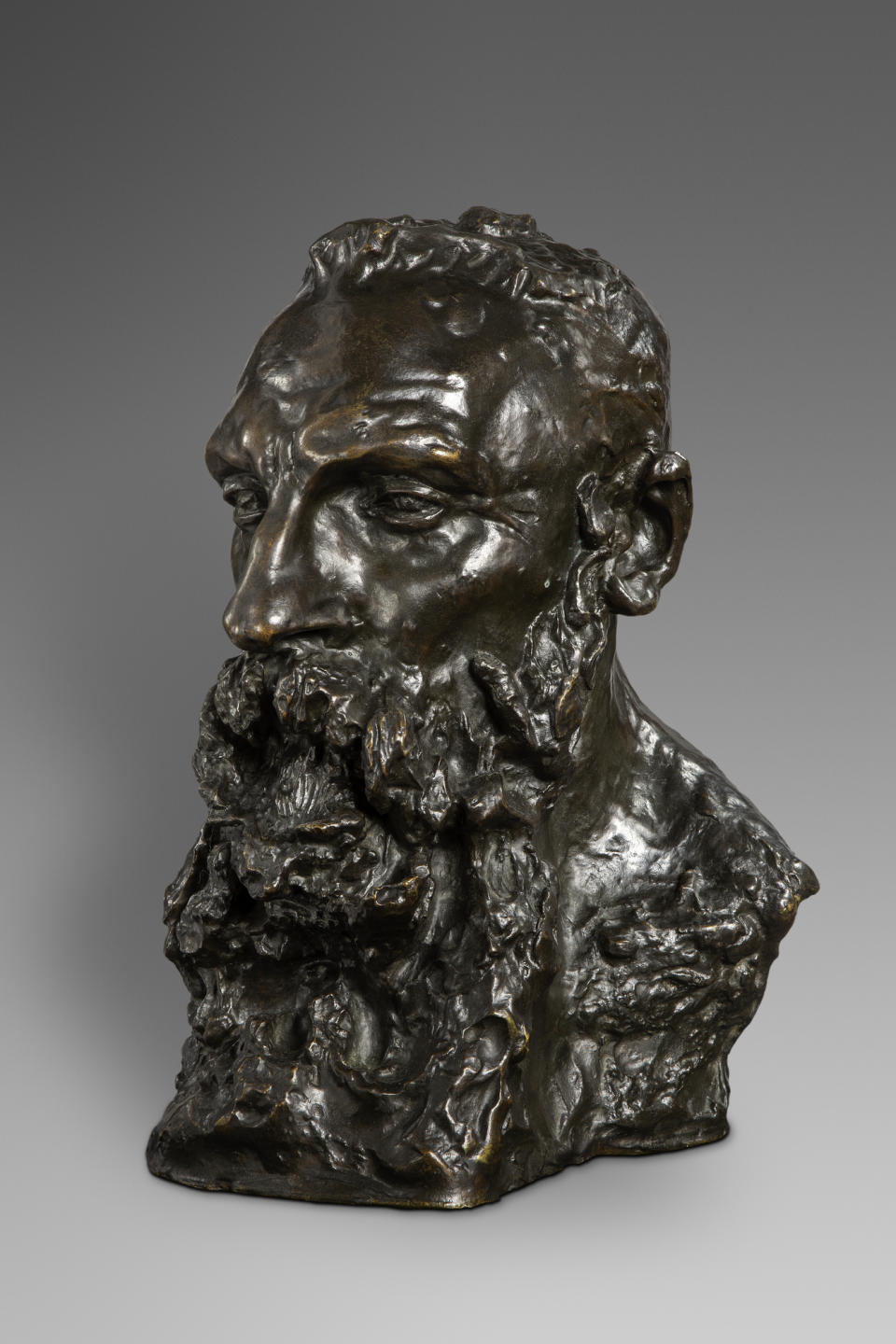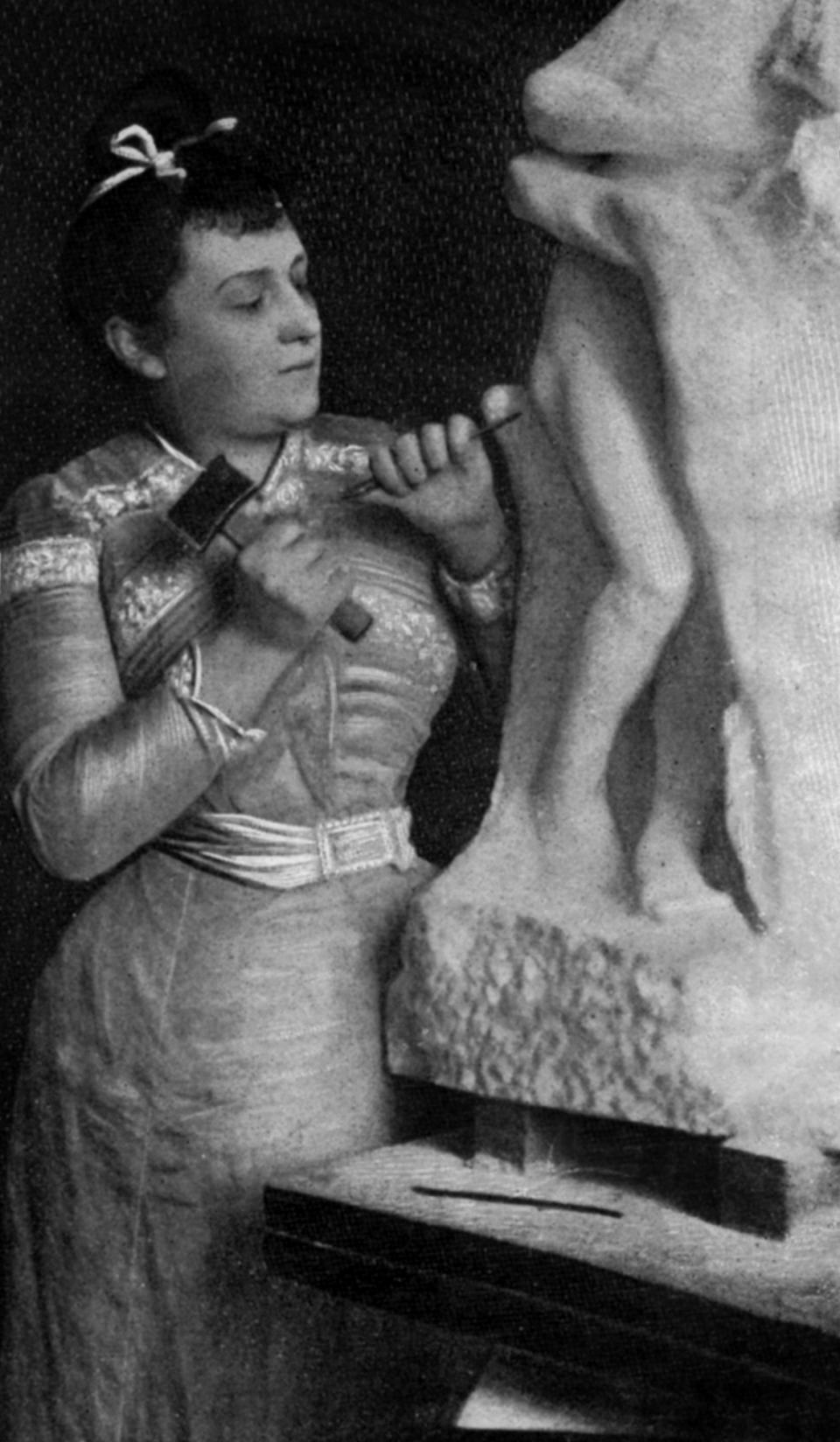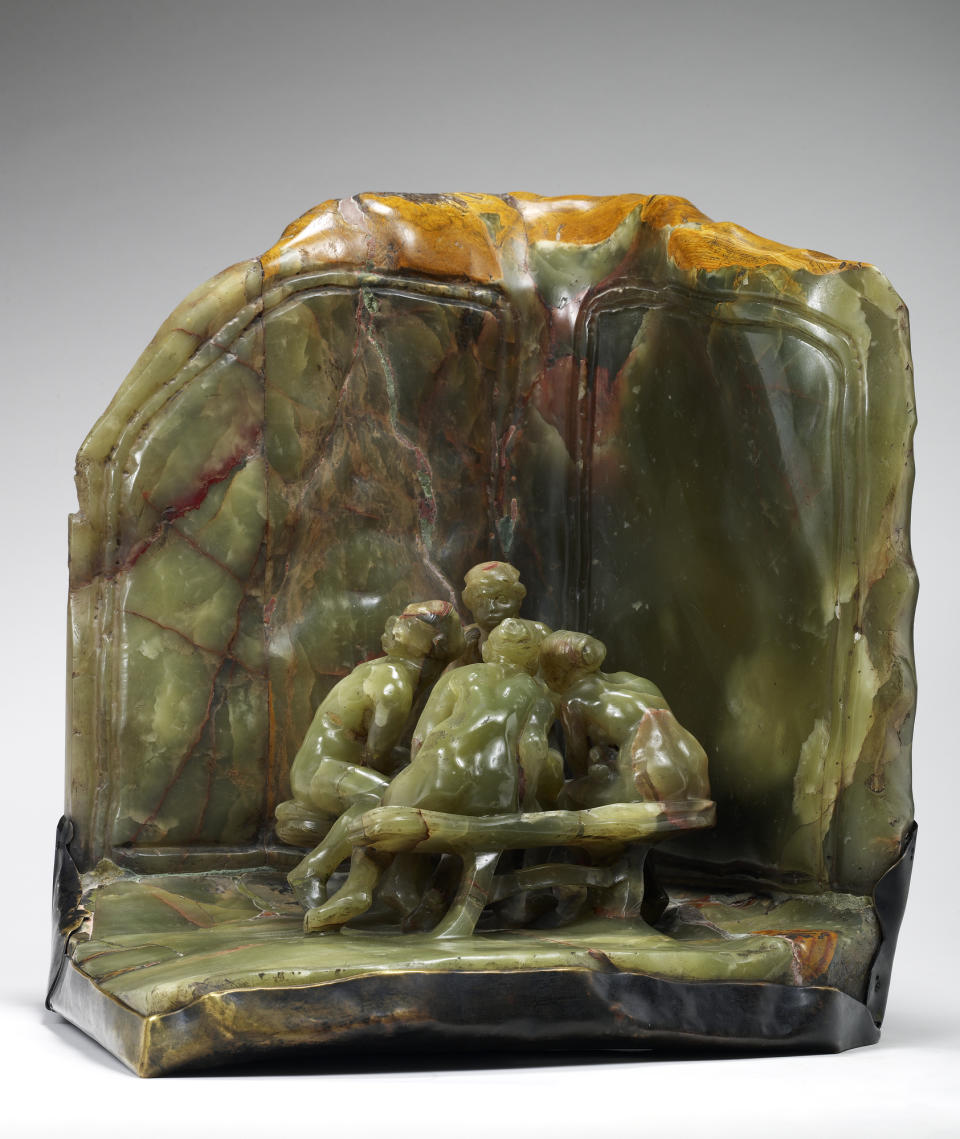Camille Claudel, Portrayed Onscreen by Juliette Binoche and Isabel Adjani, Seen Anew in Getty Show
- Oops!Something went wrong.Please try again later.
- Oops!Something went wrong.Please try again later.
- Oops!Something went wrong.Please try again later.
- Oops!Something went wrong.Please try again later.
- Oops!Something went wrong.Please try again later.

Known in France as a giant of modernist sculpture, to the rest of the world Camille Claudel is mainly remembered as Auguste Rodin’s lover.
Her tragic life, which included spending the last decades of her life in an asylum, has been immortalized on film by Isabelle Adjani opposite Gerard Depardieu in 1988’s Camille Claudel, and again by Juliette Binoche in 2013’s Camille Claudel 1915. A student, model, muse and lover to Rodin who blossomed into his rival, she produced artwork every bit as radical and expressive as his. And now — on view at the Getty through July 21 — is the first North American show in more than 30 years focusing solely on her work, including roughly 60 pieces.
More from The Hollywood Reporter
'The New Look' Boss Says Finale Isn't the End for Dior, Reveals Potential Season 2 Plans and Beyond
When Basquiat Painted and Partied In L.A. (and Took Madonna to the Fox Commissary)
The star of the show (seen first in the U.S. at the Art Institute of Chicago) is The Mature Age along with several iterations of her signature piece, The Waltz. Portraits in bronze or marble are plentiful too, a common genre for the few women sculptors of the time who might court controversy by working with professional nude models. Her spot-on likeness of Rodin is matched only by The Little Lady, a child rendered in marble. The Chatterboxes, in green onyx, depicts four women gossiping, conspiratorially leaning in. It is noteworthy in part for its female gaze — nude women not highlighted for their sensuous physicality but for their expressive engagement with one another.
The Waltz, rendered in a rapturous diagonal swoop, comprises a pair of dancers emerging from the rough-hewn swirls of a gown. “A lot of artists were pushing things to the extreme and the [government] was not always prepared. That was the case of The Waltz,” says Anne-Lise Desmas, senior curator of sculpture and decorative arts at the Getty Museum.

Conceived in plaster 1889, it took 16 years before The Waltz was cast in bronze. Working on a government commission, Claudel could not get them to commit to a marble reproduction. Along with The Age of Wisdom, it marks a break from her earlier works showing Rodin’s influence. “At the initial competition, she presented to a state art inspector two dancers being completely nude, and they wouldn’t accept that,” notes Desmas. “Then she said, okay and reworked everything with drapery. So, from criticism she was able to build on criticism to do something even better.”
Works from Rodin’s studio, where she toiled from the age of 19, include studies of different body parts, showing a delicate touch on difficult elements like hands and faces. Following an abortion in 1892, Claudel ended their relationship and, chafing under criticism that her work too closely resembled his, she embarked on small-scale sketches of nature and everyday life. Fireside Dream, made from alabaster and bronze, depicts a woman before a glowing fire, while Claudel also interpreted Hokusai’s woodblock print, The Great Wave (an influential Japanese work of the time), carving it from green onyx with bronze bathers.

Not making the trip from Musée Camille Claudel — the French national museum dedicated to her work, opened in 2017 in her hometown of Nogent-sur-Seine, south of Paris — is her final work, a marble masterpiece, Perseus and the Gorgon. Conceived in 1897, a plaster rendition was exhibited at the Salon de la Société Nationale des Beaux-Arts two years later. After the state commission for the work was canceled, the marble, commissioned by the Countess Arthur de Maigret for her mansion on the Rue de Téhéran in Paris, was presented at the 1902 Salon. Luckily, the Getty show includes a bronze miniature depicting Perseus holding the Gorgon’s head in one hand and his shield in the other, viewing his victim in its reflection. Look closely and you’ll notice a resemblance between the Gorgon and Claudel.
Claudel’s masterpiece, The Mature Age, was commissioned by the government in 1895 and canceled in 1899 before a bronze was cast. Composed of three naked figures — a young woman, kneeling and reaching for the hand of a standing man, who is drawn away by the embrace of an older woman — it is an allegory of aging … or it could be a reflection of the love triangle between Claudel and Rodin, 24 years her senior, and his longtime companion, Rose Beuret, whom Rodin refused to part with.

In November 1898, the government expressed interest in a bronze cast of the work and was shown a plaster version the following year, but a bronze cast was not commissioned. One was cast privately in 1902 (seen on loan from Musée d’Orsay), and another in 1913.
“You can imagine Rodin was influential enough to say ‘I don’t want the commission to go forward because I don’t want my private life made public,’ but that’s undocumented,” Desmas clarifies. “Like The Waltz, it had nothing to do with Rodin and was originally supposed to be commissioned to the state. And something happened, the agreement she had was stopped. We don’t know why. Each time the state failed to commission into marble or bronze.”
Coming from a middle-class family in Hauts-de-France in the country’s Northeast, Claudel began working with clay at the age of 12. A neighbor, Alfred Boucher, immediately saw talent in the girl and, when she moved with her brother and mother to Montparnasse in 1881, he acted as mentor, instructing her in a studio rented with other women sculptors. She soon found herself studying and sleeping under Rodin, who took over her instruction from Boucher.

There’s a version of her story in which Rodin took credit for her work and used his considerable influence to stifle her career, that sexism kept Claudel from achieving the same level of success as her mentor and destined her to the fate of many non-conforming woman as a patient in the psychiatric hospital of Ville-Évrard in Neuilly-sur-Marne where she was kept for the rest of her life. Then, as now, sexism did exist, but there is no documentation or evidence suggesting Rodin did anything to thwart her career.
“She was unable to live by herself,” says Desmas. “When she was committed in 1913, she had lived for many years in dirty clothes, alone, not taking food, going out only at night and being obsessed that a gang of Rodin’s was trying to steal her artwork, and upset she would be poisoned.”
In 1920, a doctor informed her mother that Claudel showed signs of improvement and might return to family life with proper supervision. But her mother, having rejected her for pursuing the arts, refused. Claudel never sculpted again and spent the final thirty years of her life institutionalized.
Best of The Hollywood Reporter

